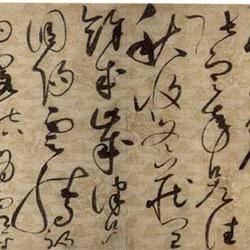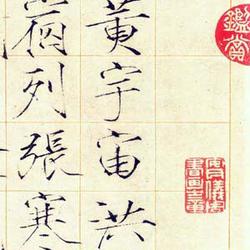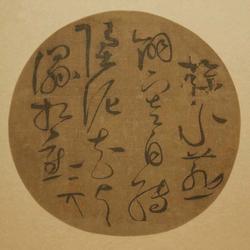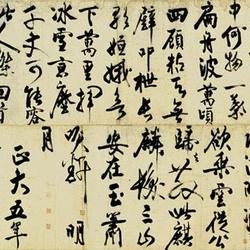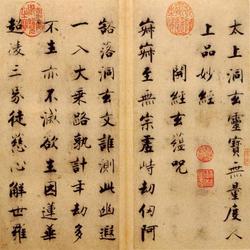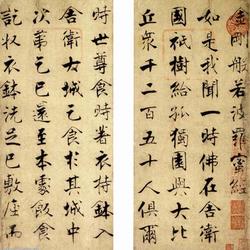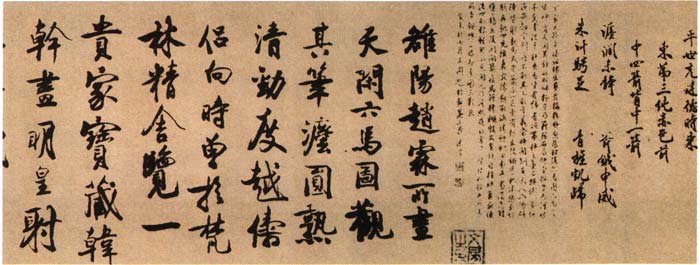
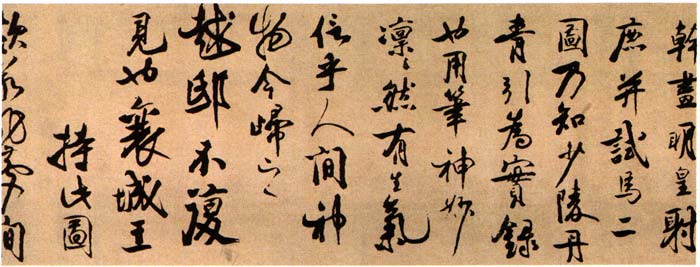
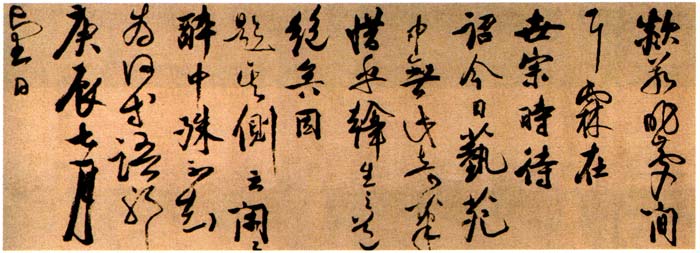
Zhao Bingwen's "Zhao Lin's Six Horses Pictures and Postscripts" Collection of the Palace Museum, Beijing
"Zhao Lin Zhaoling Six Horses Pictures and Postscripts" in running script by Zhao Bingwen on paper. The running script title is "Six Horses of Tianxian" painted by Zhao Lin. The inscription is "looking at the sun in the seventh month of Gengchen", when the author was sixty-two years old. The calligraphy is smooth, simple and natural. Jin Yuanhao asked: "Xianxian Gongshu is like the true color Toutuo. It is learned to the point of no learning, and it is said horizontally and vertically. It is nothing more than prajna." This piece is a masterpiece of Zhao Bing's calligraphy. The scroll is stamped with the "Wu Jian" Zhu Yuan square seal, and the Chinese character "horse" is stamped with a square seal. Recorded in "The Continuation of Shiqu Baoji" and "Shiqu Essays".
Explanation:
Zhao Lin of Luoyang painted the picture of Six Horses in Tianxian. The brushwork is sophisticated, clear and vigorous. The couple visited a treasure trove of a seller in the Fanlin Jingshe during the Xiang Dynasty. Han Gan painted two pictures of the Ming emperor shooting a deer and trying a horse, so he knew Shaoling painting. Quoting it as a true record, the pen is also written with great awe, awe-inspiring and vitality
If Zhao Mengjian Erlin was waiting for the imperial edict during the reign of Emperor Shizong, there is no such wonderful pen in today's art garden. It is a pity that Han Sheng's way is unique. Because the title is clouds on the side, leisurely and drunk, but I don't know why, etc. Ye Gengchen looks at the sun in July.
[appendix]
The Kingdom of Jin existed for 120 years from 1115 AD to 1234 AD. During this period, several accomplished calligraphers appeared, such as Cai Songnian, Cai Gui, Dang Huaiying, Wang Tingyun, Zhao Bingwen, etc. The author of the "Picture Scroll Inscribed on Zhao Lin's Six Horses" introduced here (the picture shows a part of the work) is Zhao Bingwen. The volume is on paper, with a width of 30.9 cm in length and 205 cm in width. There are poems on the volume written by Hongli, Emperor Gaozong of the Qing Dynasty. "Shiqu Baoji Continuation" and "Shiqu Essays" both have records of calligraphy in this volume.
Zhao Bingwen (1159-1232), courtesy name Zhou Chen, also known as Xianxian Jushi, was a native of Fuyang, Cizhou (now Ci County, Hebei Province). In fact, it is not accurate to call Zhao Bingwen a calligrapher, at least not comprehensively. In terms of cultivation, in addition to calligraphy, Zhao Bingwen is also good at poetry and painting. His works include "Yi Cong Shuo", "Zhongyong Shuo", "Zi Xia Lu", "The Analects of Confucius", "Mencius' Interpretation", "Collected Works of Fushui" "wait. In terms of officialdom, Zhao Bingwen was a Jinshi in the 25th year of Dading of the Jin Dynasty (AD 1184), and he was promoted to Shangshu of the Ministry of Rites and a bachelor of the Imperial Academy. The Shinto Stele of Zhao Gong, Minister of the Ministry of Jin Rites"). "History of the Jin Dynasty: Biography" records that he "had a studious nature, and from childhood to old age, he never failed to write a day. His writing was good at analysis, his poetry was exquisite, and his calligraphy and painting were especially powerful in cursive writing." These achievements made him one of the representative scribes of the Jin Dynasty.
In terms of calligraphy, Zhao Bingwen is as famous as his contemporaries Dang Huaiying, Wang Tingyun and Zhao Feng. However, in his early years, Zhao Bingwen's calligraphy was modeled after Wang Tingyun, who was only eight years older than him. Wang Tingyun was Mi Fu's nephew. It is said that "the first person near the water and the tower gets the moon". His calligraphy was imitated by Mi Fu, and he was very good at form and spirit. People at the time even praised Wang Tingyun's calligraphy as "not inferior to Mi Yuanzhang". Although Zhao Bingwen initially learned rice from Wang Tingyun, he later learned rice directly, which meant that he "reached directly into the land of Tathagata" and became Wang Tingyun's "senior brother". Yuan Haowen's "Zhongzhou Collection" said that Zhao Bingwen was "a master of calligraphy and calligraphy, and his calligraphy and painting have the style of the Jin and Wei dynasties, and his cursive writing is particularly outstanding." However, "Scroll Inscribed on Zhao Lin's Six Horses" is a work of cursive script. It was only in the latter part of the writing that the strokes began to move. But it was still not cursive script, but cursive script, with individual cursive characters mixed in. This gave us a little taste of Zhao Bingwen's cursive script. Style is better than nothing.
Zhao Lin was a court painter during the reign of Emperor Xizong of the Jin Dynasty. In the "Six Horses of Zhaoling", the horses' postures are vivid and powerful. Zhao Bingwen spoke highly of Zhao Lin's work in the postscript, saying that "there is no such unique painting in the art garden today. It's a pity that Han Sheng's way is perfect." In the calligraphy of this volume, Zhao Bingwen was more serious and cautious when he started writing, and mostly used regular script. From the fifth line to the middle, his mind and hands gradually relaxed, and the characters became larger, and the meaning of running script was increased, which is close to Mi Fu's "Sha". "Step Post", "Autumn and Summer Resting in Duojinglou Poetry Post"; after the middle section, the words become more unrestrained, free and easy, the temperament is revealed, showing the true nature of "good grass", and the whole volume forms a climax. This characteristic of emotional changes as the content changes, and then changes in the form of calligraphy throughout the text, is a bit like Su Dongpo's "Huangzhou Cold Food Poems". Some information says that Zhao Bingwenmi also learned from Su, but in terms of character form, we don't seem to see much relationship with Su. Zhao Bingwen's handwriting of "The Rhyme Volume of Chibi Ci of Zhui Hepoxian" has been handed down from generation to generation. Xu Yi of the Qing Dynasty said that the poem is "majestic and shocking, with the potential of thirsty and angry. I read (Su Shi's) "Da Jiangdong Goes" and believed it among my brothers" - —The evaluation is extremely high. From this point of view, although Zhao Bingwen tried to write more steadily at the beginning of copying Zhao Lin's works, the wildness in his heart made his pen fly and ink fly unknowingly, which was actually caused by his temperament.
The back of "Scroll Inscribed on Zhao Lin's Six Horses" is signed with the year "Gengchen Wangri in July", that is, the fourth year of Jin Xingding (1220 AD), Zhao Bingwen was 62 years old. "Gui Qian Zhi" says that Zhao Bingwen's "writing combines the ancient and modern schools of thought. In his later years, his calligraphy progressed greatly". Zhao Bingwenshou was 74 years old, and 62 years old was not yet his final years. Therefore, it seems difficult to conclude whether this volume is a "big step forward" for subsequent works. If the standard is set higher, there are still some shortcomings in the calligraphy of this volume, such as the turning points of the strokes are slightly rough. Comparing the calligraphy of Zhao Bingwen and Wang Tingyun, it can be seen that Zhao is inferior to Wang in terms of gentleness, elegance and refinement, while Wang is inferior to Zhao in terms of spiciness, vigor, unrestrainedness and personal characteristics. Each has its own merits. Looking back at the time when Zhao Bingwen got rid of Wang Tingyun and directly learned rice, it is really worth celebrating.

